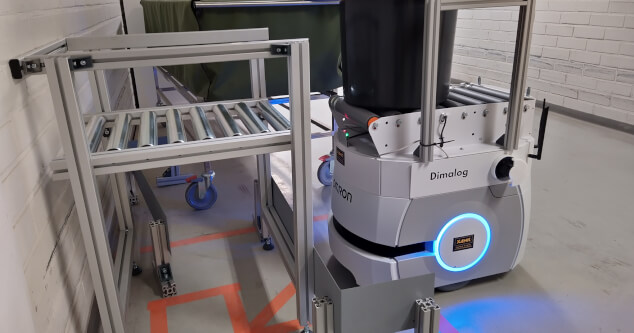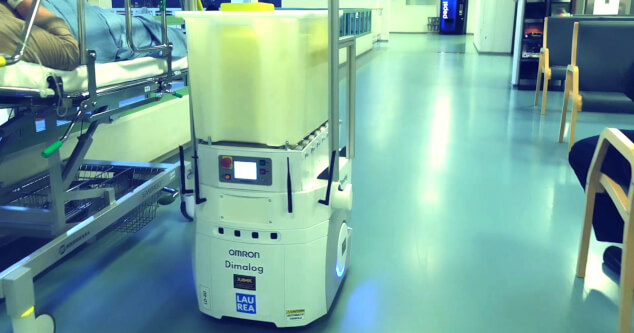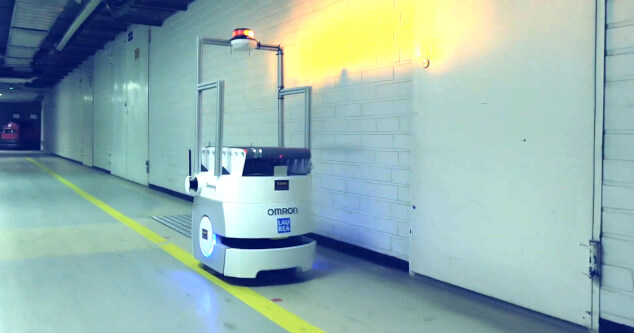Mobile robot transports waste for Kymenlaakso Central Hospital in Finland
Publisert 7. april 2021 i Flexible Manufacturing
- 0:00 - Autonomous mobile robot in Hospital Environment - Small waste logistics

Evaluating the effectiveness of mobile robots
The pilot study evaluates the suitability of mobile robots for transport work, as well as the technical solutions developed in the project. Its aim is to find out the potential for using robotics in a hospital environment. It also seeks to increase staff knowledge of robotics and related digitalisation.
Making a difference
“Robots reduce the need for the manual transfer of waste,” says Jonne Holmén. “In the future, waste transportation can be optimised so that it takes place at times when there is less other traffic. According to research, 30% of nursing staff's working time is spent on non-nursing work. The robot can be used to handle several transports within the hospital. Mobile robots are ideal for routine tasks that normally require physical labour.”
